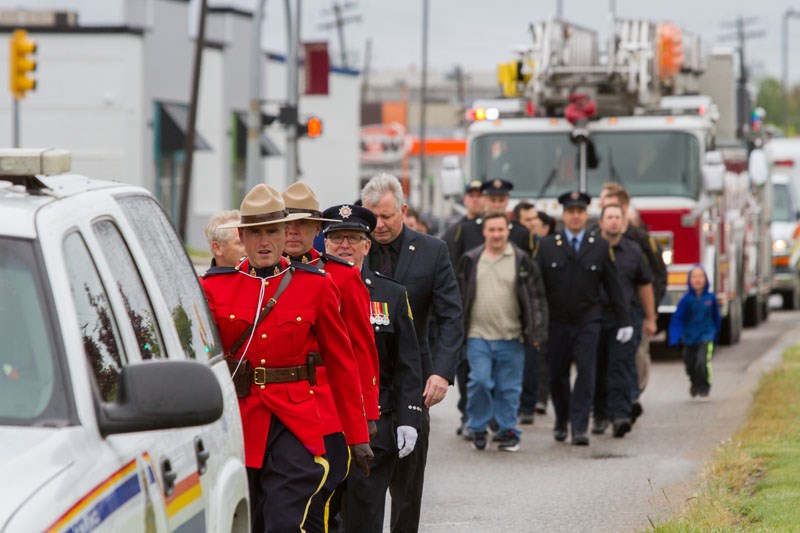Thompson’s Fire & Emergency Services (TFES) along with its RCMP detachment gathered in the cold and rain this Sept. 11 to honour the emergency personnel who lost their lives on that fateful day in 2001. Community leaders like Churchill-Keewatinook Aski MP Niki Ashton, Thompson MLA Kelly Bindle and Mayor Dennis Fenske also came to give their thanks and condolences.
Among those present, prospective local Bruce Moncur was quietly celebrating his own anniversary that day: it was the 10th anniversary of his discharge from the hospital after being wounded serving in Afghanistan.
Like many that day, Moncur’s life had changed the moment the first plane had hit the World Trade Centre. Moncur had joined the army reserves while still in high school in July of 2001; little in the events of the previous decade suggested that he would ever be obliged to set foot on foreign soil. “It was a summer job, really. We were a peacetime army at that time.”
Only 19 days after he completed basic training, the towers fell. “I get a phone call with the order to move, saying, ‘You’re on standby, and in 72 hours you’re expected to be ready for deployment,’ and here I’m wondering about my Grade 11 math class!”
Moncur would not be deployed until 2006 to take part in Operation Medusa, the largest Canadian-led battle not only in Afghanistan, but also since the Korean War. Out of 40 soldiers in his platoon, only five emerged who had not been killed or wounded. “A lot of people don’t understand that Canadians suffered more casualties per man than the Americans did. Forty thousand troops deployed, 2,100 injured, 158 dead; that’s one in seventeen.”
Moncur was one of those casualties: during the operation, Moncur suffered three shrapnel wounds in the head, back and buttocks, the result of close proximity to American air support. Three facilities and two major surgeries later, Moncur left the hospital on Sept. 11, 2006, leaving behind five per cent of his brain matter. “It was my own personal 9/11; when I got home, I had lost the ability to read, write, walk, and my talking was slurred. I had to rebuild.”
But despite surviving a war, multiple surgeries, and a gruelling recovery, Moncur’s battle wasn’t over yet: today, he fights the Canadian government. “After I was injured, I received a lump sum payment of $22,000 for five per cent of my brain. That was it. Thanks for coming out.”
In his decade-long battle with the Veterans Affairs office, Moncur has become a high profile advocate for wounded veterans: he has published a book, and was named one of Huffington Post Canada’s 50 Most Important Contributors, a list which also included the likes of Justin Trudeau.
Despite the life-changing incident, Moncur hardly holds it against the Americans. Between being one of Canada’s closest allies, and having friends who lived in the vicinity of Ground Zero, tribalism is far from Moncur’s mind. “Friendly fire is a part of war, and the American Air Force is bar none the best in the world. Having those planes with you feels pretty good when it doesn’t land on you.”
As for the circumstances, Moncur saw the war as a personal duty as much as a national one: “I had friends and family that lived there, went to school by the World Trade Centre, and couldn’t come back for a year because of the asbestos and everything. I had friends who lived it. I was 17, and I was angry.”
Until recently, Moncur has lived in Windsor, Ontario; he hopes to resettle in Thompson and is in the early stages of opening a business in the community.




